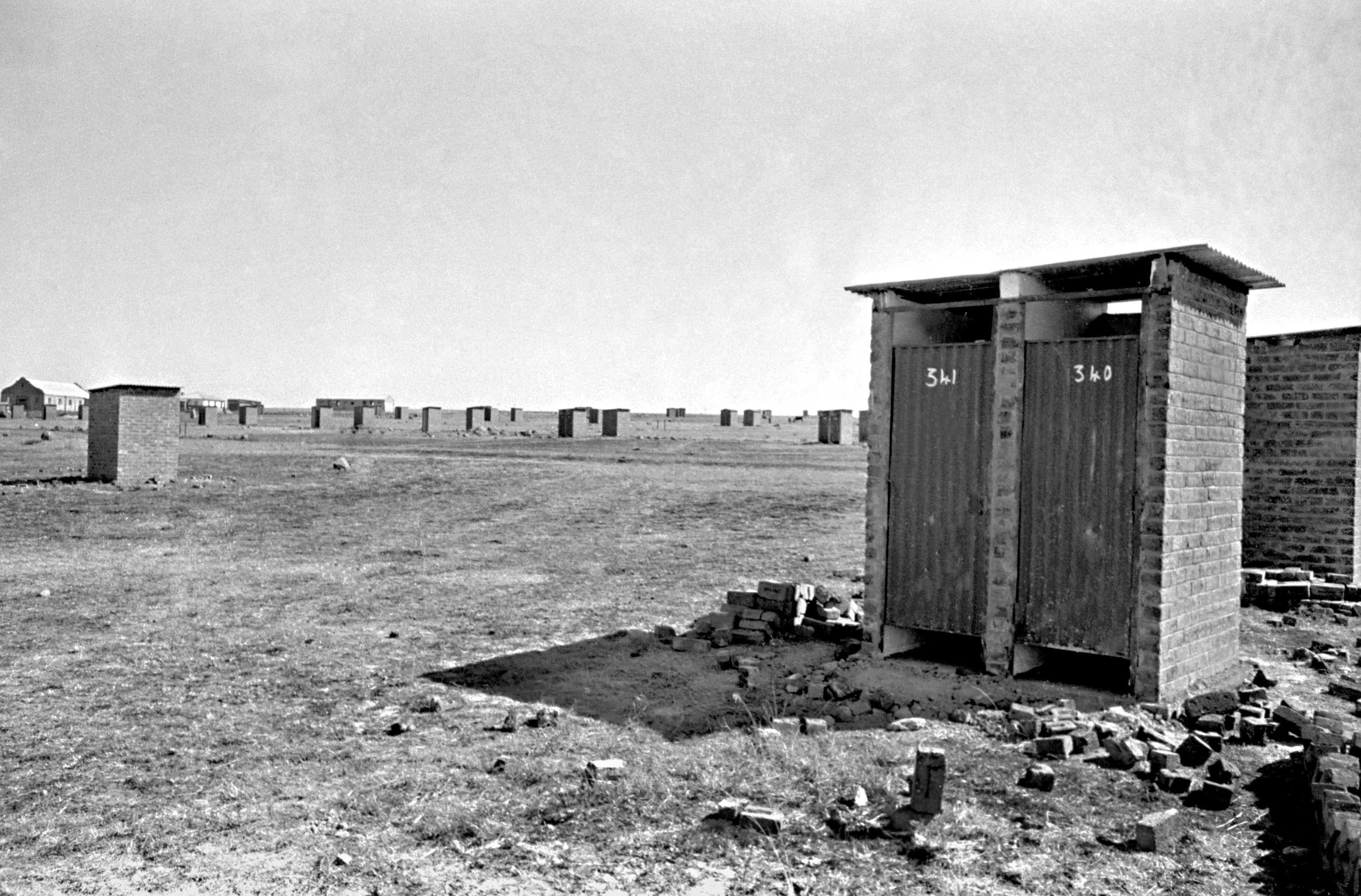Constituting Injury
Law, Dispossession and Resistance in South Africa

Photograph by Jürgen Schadeberg, 1959. https://www.jurgenschadeberg.com/
References
- Beinart, William and Saul Dubow, eds. 1995. Segregation and Apartheid in Twentieth-Century South Africa. London: Routledge.
- Davenport, T. R. H. 1991. South Africa: A Modern History. 4th ed. Toronto: University of Toronto Press.
- Dubow, Saul. 1989. Racial Segregation and the Origins of Apartheid in South Africa, 1919-36. Basingstoke and London: The Macmillan Press Ltd.
- Erlank, Natasha, and Karie L Morgan. 2015. “Sophiatown.” African Studies, 74 (1): 1–9.
- Feinberg, Harvey M. 2015. Our land, Our life, Our future. Hidden Histories Series. Pretoria: Unisa Press.
- Frankel, Philip. 1979. “The Politics of Passes: Control and Change in South Africa.” The Journal of Modern African Studies, 17 (2): 199–217.
- Fry, Poppy. 2010. “Siyamfenguza: The Creation of Fingo-ness in South Africa's Eastern Cape, 1800–1835.” Journal of Southern African Studies, 36 (1): 25-40.
- Hannerz, Ulf. 1994. “Sophiatown: the view from afar.” Journal of Southern African Studies, 20 (2): 181–193.
- Hindson, Doug. 1987. Pass Controls and the Urban African Proletariat. Johannesburg: Ravan Press.
- Kahn, Ellison. 1949. “The Pass Laws.” In Handbook on Race Relations in South Africa, edited by Ellen Hellmann, assisted by Leah Abrahams. Published for the South African Institute of Race Relations. Cape Town, London, New York: Oxford University Press.
- Legassick, Martin. 1995. “British Hegemony and the Origins of Segregation in South Africa, 1901-14.” In Segregation and Apartheid in Twentieth-Century South Africa, edited by William Beinart and Saul Dubow. London: Routledge.
- Lodge, Tom. 1981. “The Destruction of Sophiatown.” The Journal of Modern African Studies, 19 (1): 107–132.
- Magubane, Bernard M. 1996. The Making of a Racist State: British Imperialism and the Union of South Africa, 1875 – 1910. Trenton, NJ: Africa World Press.
- Marks, Shula. 1978. “Natal, the Zulu Royal Family and the Ideology of Segregation.” Journal of Southern African Studies 4 (2): 172–94.
- Ngcukaitobi, Tembeka. 2018. The Land Is Ours: South Africa’s First Black Lawyers and the Birth of Constitutionalism. Cape Town: Penguin Books.
- Posel, Deborah. 1991. The Making of Apartheid 1948–1961: Conflict and Compromise. Oxford: Oxford University Press.
- Savage, Michael. 1986. “The Imposition of Pass Laws on the African Population in South Africa 1916-1984.” African Affairs, 85 (339): 181–205.
- Schmidt, Elizabeth. 1983. “Now You Have Touched The Women”: African Women’s Resistance to the Pass Laws in South Africa 1950-1960. United Nations Centre Against Apartheid. New York: United Nations.
- South African Native Affairs Commission and Godfrey Yeatman Lagden. 1905. South African Native Affairs Commission, 1903-1905. Vol. 1: Report of the Commission with annexures. Cape Town: Cape Times. Accessed 28 August 2024 https://cudl.lib.cam.ac.uk/view/PR-RCS-CASE-A-00152/1
- Swanson, Maynard W. 1977. “The Sanitation Syndrome: Bubonic Plague and Urban Native Policy in the Cape Colony, 1900–1909.” The Journal of African History, 18 (3): 387–410.
- Walker, Cherryl. 1982. Women and Resistance in South Africa. London: Onyx.
- Walker, Cherryl. 2014. “Critical Reflections on South Africa’s 1913 Natives Land Act and Its Legacies: Introduction.” Journal of Southern African Studies 40 (4): 655–65.
- Wells, Julia C. 1983. “Why Women Rebel: A Comparative Study of South African Women’s Resistance in Bloemfontein (1913) and Johannesburg (1958).” Journal of Southern African Studies, 10 (1): 55–70.
- Willan, Brian. 1995. “Introduction.” In Native Life in South Africa, by Sol. T Plaatje. 2nd ed. Johannesburg: Ravan Press.
- Worden, Nigel. 2012. The Making of Modern South Africa: Conquest, Apartheid, Democracy. 5th ed. Newark: Wiley.